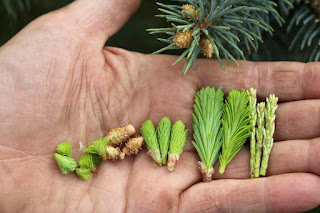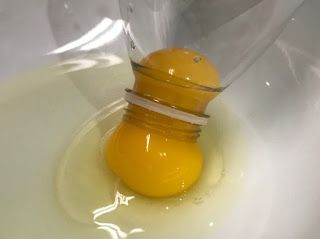In the Bathroom
Eggs can make you beautiful on the inside AND outside! I am going to be honest. I have not had much personal experience using eggs for any beauty routine. To be honest, I don't really have much of a beauty routine at all. However, I do know that eggs have multiple uses in beauty regimens (just google egg and beauty). Most of the information that is in this blog are taken from other blogs and there are links to the original content.
Eggs and Hair Mask
Eggs have protein and several vitamins (see list below pic) that can make your hair soft, strong, and shiny. Lecithin, in the eggs, helps to clean the dirt and greasiness without stripping out the natural oils of your scalp. There are actually
egg shampoos that you can purchase.
Vitamin A- It enhances sebum production in hair, thus keeping away the problem of dandruff. Besides, it also deals with the problem of hair loss.
Vitamin B- This vitamin plays a crucial role in supplying adequate oxygen to scalp, thus improving the overall circulation in hair.
Vitamin D- Improves the strength of hair, fighting with the problem of hair loss simultaneously.
Vitamin E- Deeply cleanses hair follicles and scalp, providing optimum and much needed levels of moisture to the scalp.
Fatty Acids- Makes hair more lustrous than ever before. It also strengthens them from roots and thus, prevents hair loss.
One way to use eggs in your hair is to make a mask and leave it in your hair for a while and then wash it out. Taken from
Beutyepic.com...here are some of the benefits of using a hair mask: softens and moisturizes hair, reduces hair fall, promotes hair growth, nourishes hair follicles, cleanses scalp and makes hair shiny and silky.
Egg Honey Apple Cider Vinegar Hair Mask:
1 egg
2 tablespoons of honey
1 tablespoon of apple cider vinegar
Mix all the ingredients to make a smooth paste.
Apply this paste to your scalp and hair with your fingertips.
Leave it on for about 45 minutes, then shampoo your hair.
I did try this egg hair mask. It was pretty thin so that made it challenging to apply. I wish I had a shower cap to keep it in place but I just put a towel around my shoulders to catch any drips. My hair did feel soft and more "full" after washing and drying. I want to try to do this more in the future but it is pretty messy.
If you have dry hair, use only egg yolk
If you have oily hair use only egg white
If you have normal hair, use whole egg (both egg whites and yolk)
Eggs and Face Mask
Egg shells are full of calcium and minerals. Eggs also contain collagen that aids in improving skin elasticity and firmness, and the protein in egg whites helps reduce the appearance of fine lines and wrinkles. You can make a face mask with egg white and egg shell for bright and flawless skin. Taken from
Beautyglimpse.com:
Eggshell Face Mask
This is an all-in-one eggshell face mask that can beautify by nourishing, brightening, and firming your skin. To prepare it, separate the white from the yolk and beat the white portion. Now, mix the eggshell powder with the egg white and whisk properly. Use it all over your face, massage gently for a few minutes by using your fingertips, and allow it to dry. Then, wash it off with fresh cold water. It will give you a healthy and shiny skin while preventing premature aging. (To make eggshell powder just crush dry eggshells with a grinder. You can heat them at low heat in the oven to make sure they are germ free and dry.)
• Egg For Toning The Skin– Whip an egg till it becomes frothy. Apply it all over your face as well as neck. Wait till it is dry and rinse in lukewarm water. This practice would help to tone and tighten your skin.
• Egg-White For Firming Pores– Take an egg and the egg-white has to be separated from the yolk. Beat the egg white to produce a thick foam and now, apply it on cleaned face. Wait for about twenty minutes and wash off with lukewarm water. This mask helps to firm skin pores and also treat acnes.
• Egg To Reduce Under-Eye Puffiness– If the skin under your eyes seem puffy and your eyes look tired, apply a thin coating of egg white on the area under your eyes and leave on for about ten minutes. Wash off with plain water. Eggs are known to fix puffy eyes effectively.
It seems that a lot of these recipes just use the white. Did you know that you can use an empty plastic bottle to remove the yolk from an egg? Just push the air out of the bottle and then suck up the yolk leaving the white behind!
Enjoy using eggs in your beauty routine...they are natural and great for your skin and hair!
Have an eggcellent day!
~Denise







